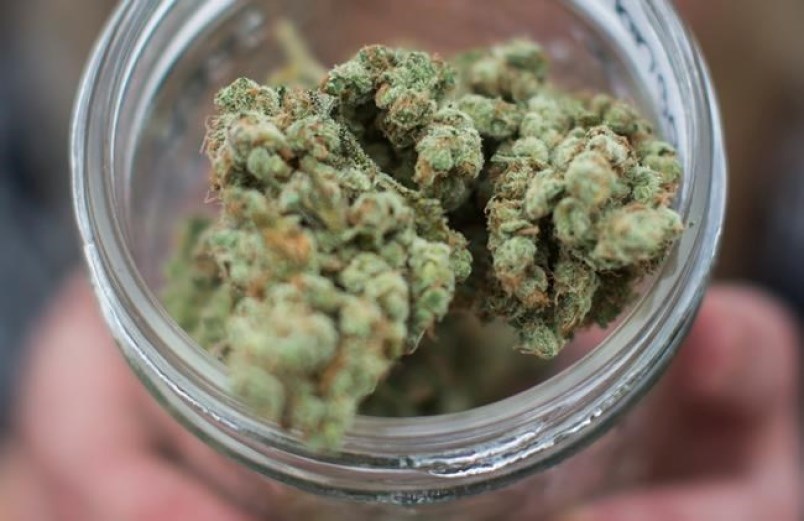It wasn’t a big dog that staggered into the Juan de Fuca Veterinary Clinic, but not a super-small one, either. Probably weighed 20 pounds.
“We don’t know what’s wrong,” the owners said.
Dr. Margaret Cairns had a pretty good idea, though. The dog was showing the signs of marijuana poisoning. “It looked drunk, basically.”
It turned out this dog began acting strangely about an hour after being taken for a walk on a West Shore trail. That’s a common story. The same quiet, wooded paths where people like to walk their dogs are the same secluded trails where people like to stroll and smoke weed — and to dispose of the roaches, which your household hound hoovers up along with all the other interesting-smelling bits along the way.
Next thing you know, an hour, hour and a half later, the dog has gone strange — drowsy, lacking co-ordination, starting to fall over before catching itself and regaining its balance. Maybe it urinates, or seems hyper-sensitive to loud sounds, or acts anxious or paranoid. It’s an awful experience for a dog.
This isn’t a rare occurrence. Cairns has had two similar cases in the past couple of months. It’s even more common at the Central Victoria Veterinary Hospital — the animal ER — where they average maybe one suspected doggie overdose a day. The numbers climb during holidays and long weekends, when more people are out and about.
Which brings us to today when, with the weather forecast (finally!) nudging double digits, Victorians are poised to head outdoors again. Now that pot is legal, will we see an increase in pet poisonings, too?
Anecdotally, there hasn’t been much change since legalization in October. The dogs-and-dope dilemma isn’t new in the capital (“We’ve always seen it,” Cairns says. “It’s always been an issue.”), but isn’t getting worse, either — possibly because, legal or not, anybody who wanted to consume cannabis in Victoria already did so.
What might become different, though, is where people choose to consume. If they now feel freer to inhale outdoors, the worry is that pets will stumble into more pot when out in public. “As the warmer weather hits, there may be an increase,” says the veterinary hospital’s Dr. Christin MacIntyre.
The experience of other jurisdictions shows cause for concern. A story out of Massachusetts last week talked about dogs overdosing after nosing their way through a field where an outdoor music festival had been staged. The Canadian Veterinary Medical Association cites a study showing a fourfold jump in cannabis poisoning among pets in Colorado after marijuana was legalized there.
The problem isn’t confined to dogs getting into randomly discarded butts, of course. The leading cause of intoxication is actually cannabis edibles — gummies and brownies wolfed down when left on too-low counters in the home. People are pretty good about fessing up when that happens, though. The owners will be upfront, MacIntyre finds. “The marijuana butters, marijuana oils, marijuana baked goods are much more potent.”
What complicates things is when no one knows what the source of the dog’s distress is. The symptoms can mimic ones displayed when other toxins are involved. “There are other things that look like pot,” Cairns says. “Anti-freeze is the scary one.”
The smaller the dog, the more intense the effects of the marijuana. Cats are susceptible, too, though it’s relatively rare for them to get into trouble. “Cats generally avoid eating garbage, scavenging cigarette-type butts on walks around the block, or table- or counter-surfing,” the veterinary association’s website says. “They also lack a sweet tooth, so we do not see them take in pot products like dogs do.”
If the pot-ingestion is caught early, vets will try to induce vomiting, MacIntyre said, but it’s actually dangerous to do so once the dog is sleepy or has difficulty swallowing, as the animal could aspirate the vomit. Sometimes, they’ll give the dog activated charcoal to filter THC from its bloodstream. A mild sedative might help it deal with what is a freaky experience, Cairns says.
No, it’s not funny to blow smoke in your pet’s face. And yes, even what seems like a harmless amount to a human can be hell on a dog.
“People need to be aware,” Cairns says. “Don’t drop your roaches.”
— Jack Knox, Times Colonist



